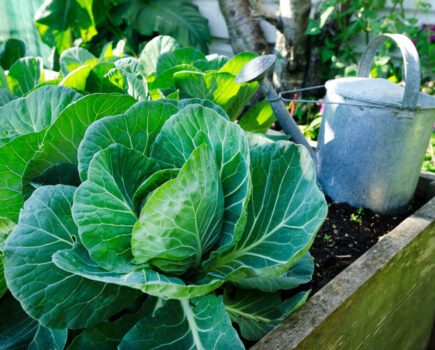Ruth gets to grips with the most important May tasks
The first ever issue of Amateur Gardening was issued 140 years ago this month and I am sure that Victorian gardeners were kept as busy in their plots at this time of year as we are today. There is so much to think about in May – from pruning and Chelsea chopping to sowing directly into the soil, pricking out seedlings, pinching out young plants to encourage bushy growth, keeping plants safe from pests and disease and making sure you still have some insulating fleece to hand in case of unexpected late frosts.
Over the next few days I will be cutting back our early-flowering shrubs, the winter-blooming clematis and forsythia, and later in the month also giving our bushy shrubs the first chop of the year to keep them tidy and productive. Winter-flowering clematis such as C.cirrhosa ‘Freckles’ are easy to keep neat – you simply take your shears and run them over the plants, removing dead flowers and any leaves that are growing outside their allotted spot.

The forsythia needs pruning immediately after it has flowered because each year’s blooms are produced on wood that grew the previous year – so if you cut it back in autumn, when most deciduous shrubs are cut back, you will lose the flower-bearing wood. It can also grow leggy and unproductive if left to grow untamed, with a tangle of bare stems and just a few blooms above head height.
Remove congested stems inside the plant, especially weak shoots growing from the base, as well as thin and spindly branches and any that look dead, damaged and diseased.
If the weather takes a turn for the worse, use the time to make sure the plants in your greenhouse are thriving. Make sure your undercover space is well ventilated, with doors and windows left open, and check plants for pests, dealing with any immediately.
On very hot days, wet the greenhouse floor with water to raise humidity and reduce the risk of glasshouse red spider mites – small sap-sucking pests that thrive in still dry atmospheres and quickly colonise and weaken your plants.
Rose care
Give them a good start

1. Remove suckers growing a short way from the base of rose plants. They come from the rootstock and are more vigorous than the main plant and will drain its energy. Remove soil from around the sucker and pull it free – don’t cut it as this will encourage regrowth.

2. Remove and dispose of any leaves that show early signs of the fungal disease black spot, and never add them to the compost heap. Mulch generously around your rose to bury any disease spores.
A few quick jobs
- It isn’t too early to think ahead to next winter’s plants, so get sowing hardy perennials such as bellis daisies, pansies and violas.
- They will grow into robust plants between now and late summer when they can be planted out.
- Take a few minutes every day to keep on top of weeding.
- I find a hoe is the easiest way to get rid of weed seedlings, then I leave them lying on the soil to rot down as a green manure.
- If dry spells are forecast, start storing ‘grey water’ from the washing up bowl as long as it isn’t too filthy or contains products with bleach.
- Even better, install a water butt or two (or three!) to make the most of late spring showers.
Find more tips, advice and articles like this at the Amateur Gardening website. Subscribe to Amateur Gardening magazine now.





